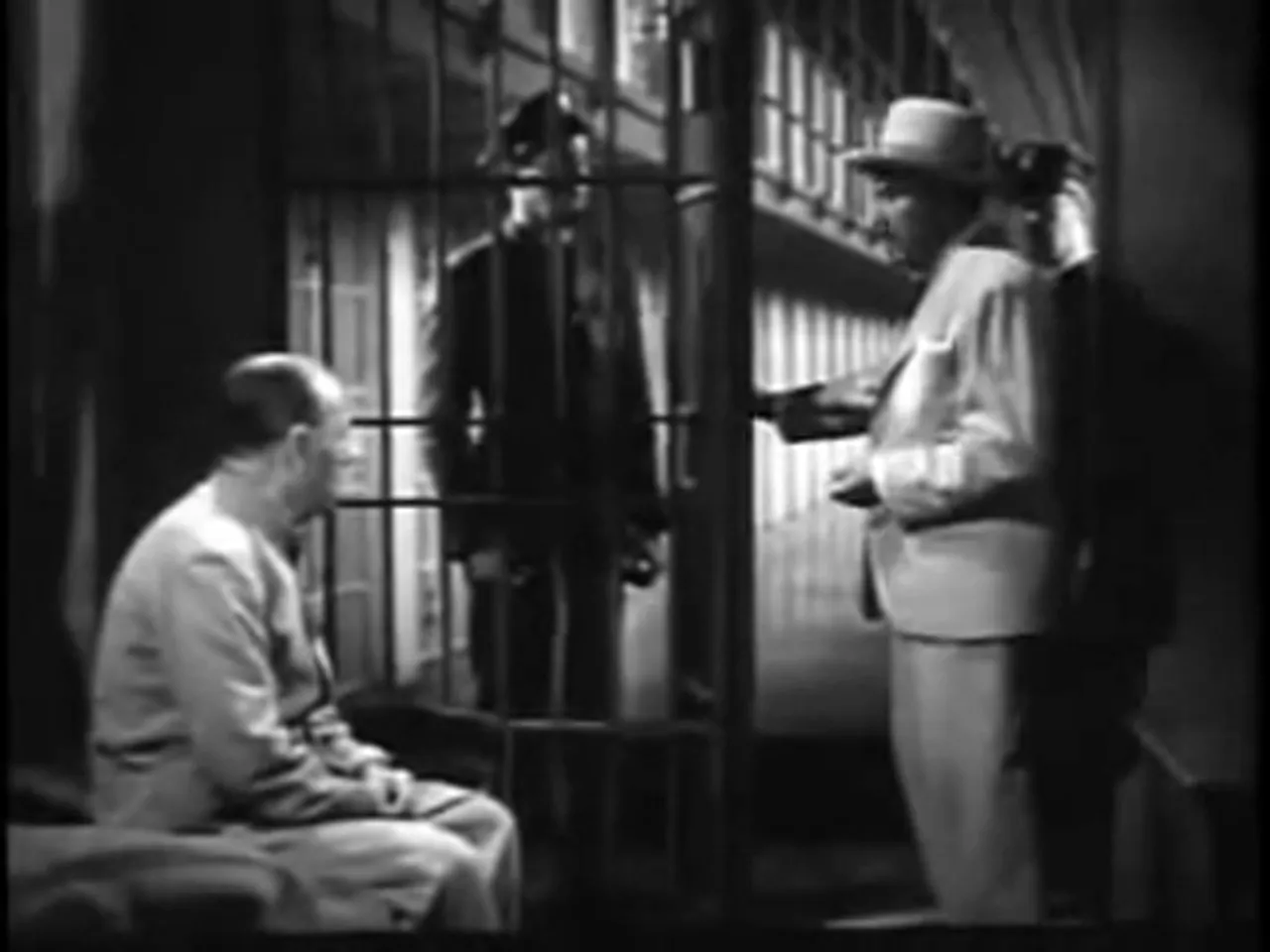Dark Alibi (1946), directed by Phil Karlson and starring Sidney Toler as Charlie Chan, endures as a compelling film noir movie that blends detective craft, procedural ingenuity, and a terse moral urgency. This classic film noir movie, adapted from the enduring Charlie Chan tradition, interrogates the fragile certainties of the criminal justice system through a compact, sixty-one-minute mystery. In the hands of a seasoned observer of old-time cinema, Dark Alibi presents an opportunity to examine how a film noir movie can be both a tightly plotted mystery and a social critique of evidence, identity, and institutional failure.
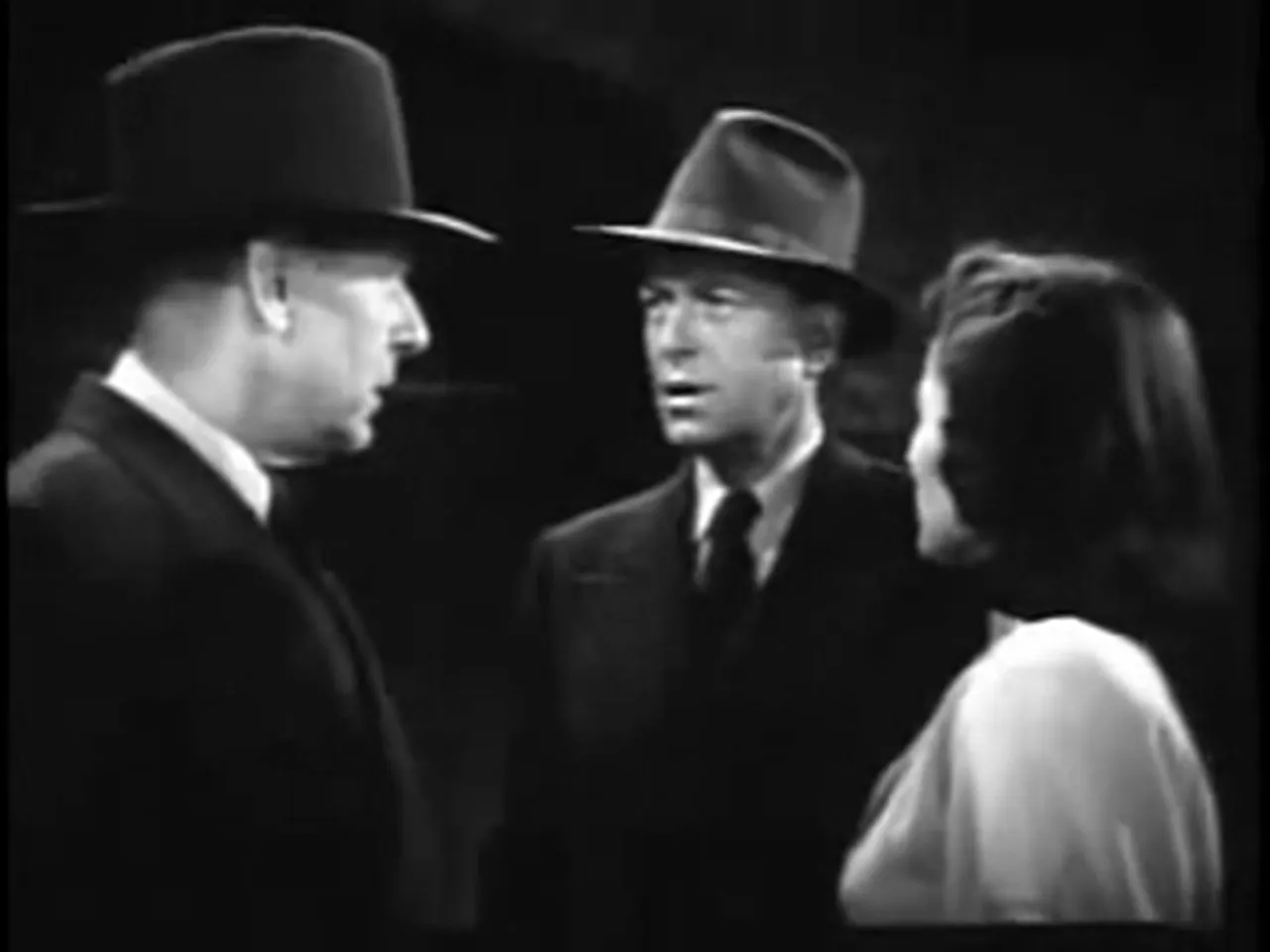
Outline
- Introduction: Dark Alibi as a film noir movie
- Plot overview and the central mystery
- Key characters and performances
- Thematic threads: justice, identity, and forged evidence
- Technical craft: direction, cinematography, editing, and music
- Charlie Chan’s methodology: deduction, experiment, and ethical pressure
- Genre placement: is Dark Alibi a film noir movie?
- Legacy and historical context
- Concluding reflections and recommendation
Introduction: The Case at the Heart of a Film Noir Movie
At the center of Dark Alibi lies a single, incendiary premise: an ex-convict named Thomas Harley is accused of bank robbery and murder despite having an alibi. The fingerprints that convict him are physically present at the crime scene. The public case seems airtight, yet the film noir movie unfolds by method and intuition, as Charlie Chan navigates a narrow span of nine days to overturn a death sentence. The film noir movie format here is compressed — a little over an hour — yet it demonstrates how noir aesthetics and detective procedure can dovetail in brisk storytelling.
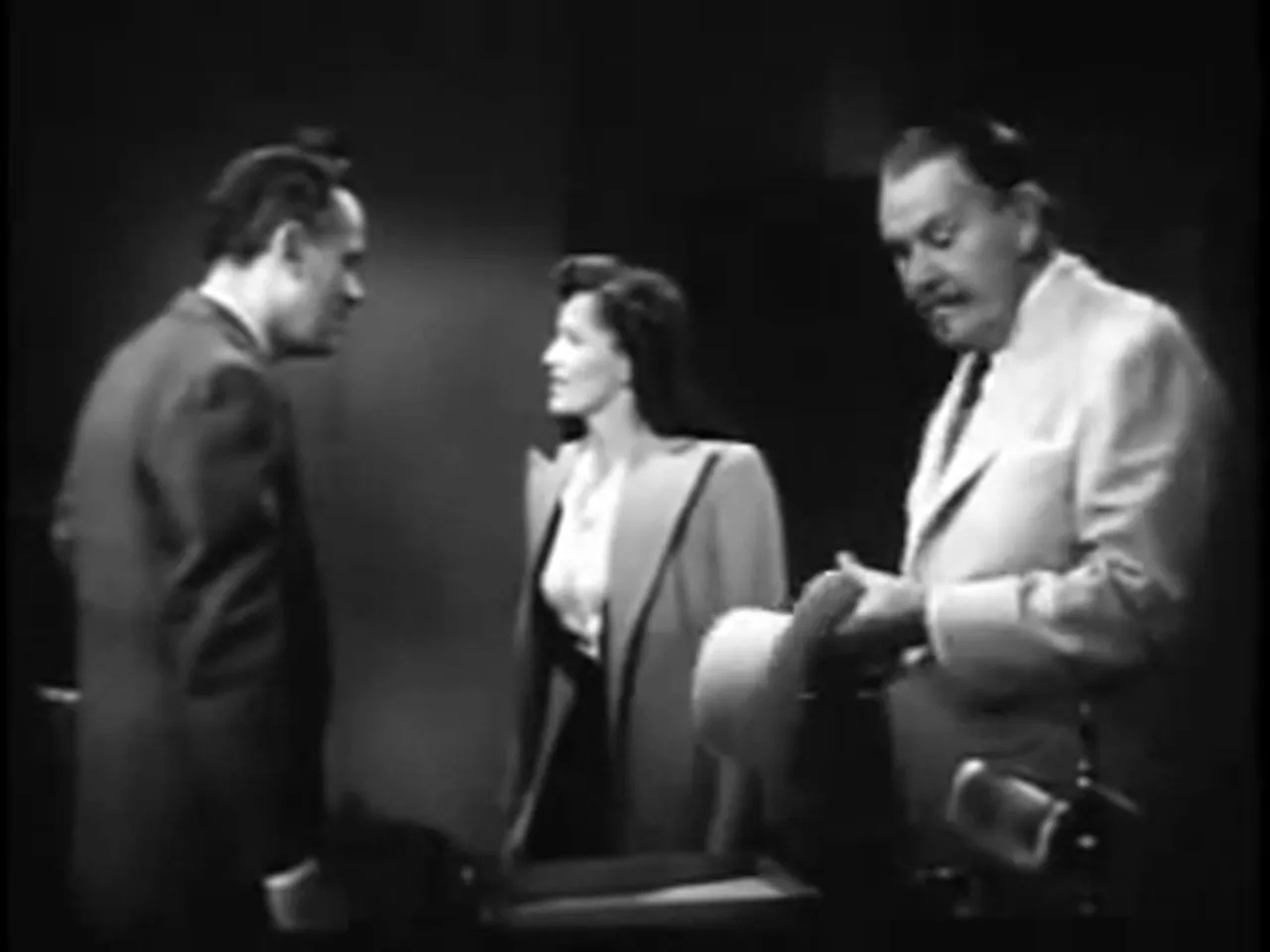
Dark Alibi is notable among Charlie Chan entries for its preoccupation with evidence as a manufactured object. The film noir movie repeatedly returns to the image of the fingerprint card — a technical artifact that becomes both a weapon and a lie. Chan's investigation is less about chasing the robberies and more about tracing the provenance of the prints, the gears that can be made to impersonate a human trace. That focus on the mechanisms of proof aligns Dark Alibi with the film noir movie's larger fascination with systems, corruption, and the vulnerability of truth.
The Plot Unpacked: How the Film Noir Movie Moves
Dark Alibi opens in medias res, with an accusation that functions as narrative detonator. Thomas Harley is confronted at his rooming house and accused of having been involved in a Citizens State Bank robbery that resulted in a murdered guard. Harley protests: he was locked in the Carey Theatrical Warehouse for four hours. He points to the impossibility of being accused when he can prove he was detained elsewhere. The film noir movie sets this paradox into motion immediately: the physical evidence (fingerprints) and the human testimony are at odds.
June Harley, the daughter desperate and sparing of melodrama, seeks out Charlie Chan. She presents the peculiar detail haunting the plot: the note that lured her father to the warehouse was typed on a typewriter belonging to Mrs. Foss, Harley's landlady. That clue opens a thought-line typical of the film noir movie—private spaces and domestic furnishings bear on public crimes. Various tenants — a showgirl, a ledger-keeper, a salesman — populate the Foss Hotel, and Chan interrogates them with the low-key ruthlessness of a craftsman: who had access to the typewriter, who had motive, and who might manufacture a trace?
The plot accelerates via a chain of discoveries. The Carey Warehouse yields a costume and a purse-button dropped like a planted breadcrumb. Miss Petrie, the timid tenant, turns out to be married to Jimmy Slade, a trustee who works in the prison fingerprint bureau. Miss Petrie is later killed in an apparent traffic accident — but in the pattern of the film noir movie, accidents often function as carefully staged crimes. The trajectory is clear: someone is using prison fingerprint cards, photographing and engraving them to create rubber pads that can transfer prints to crime scenes. Chan's method becomes experimental: reproduce the forgery, find the tools, and trace the apparatus back to the man who profits from it.
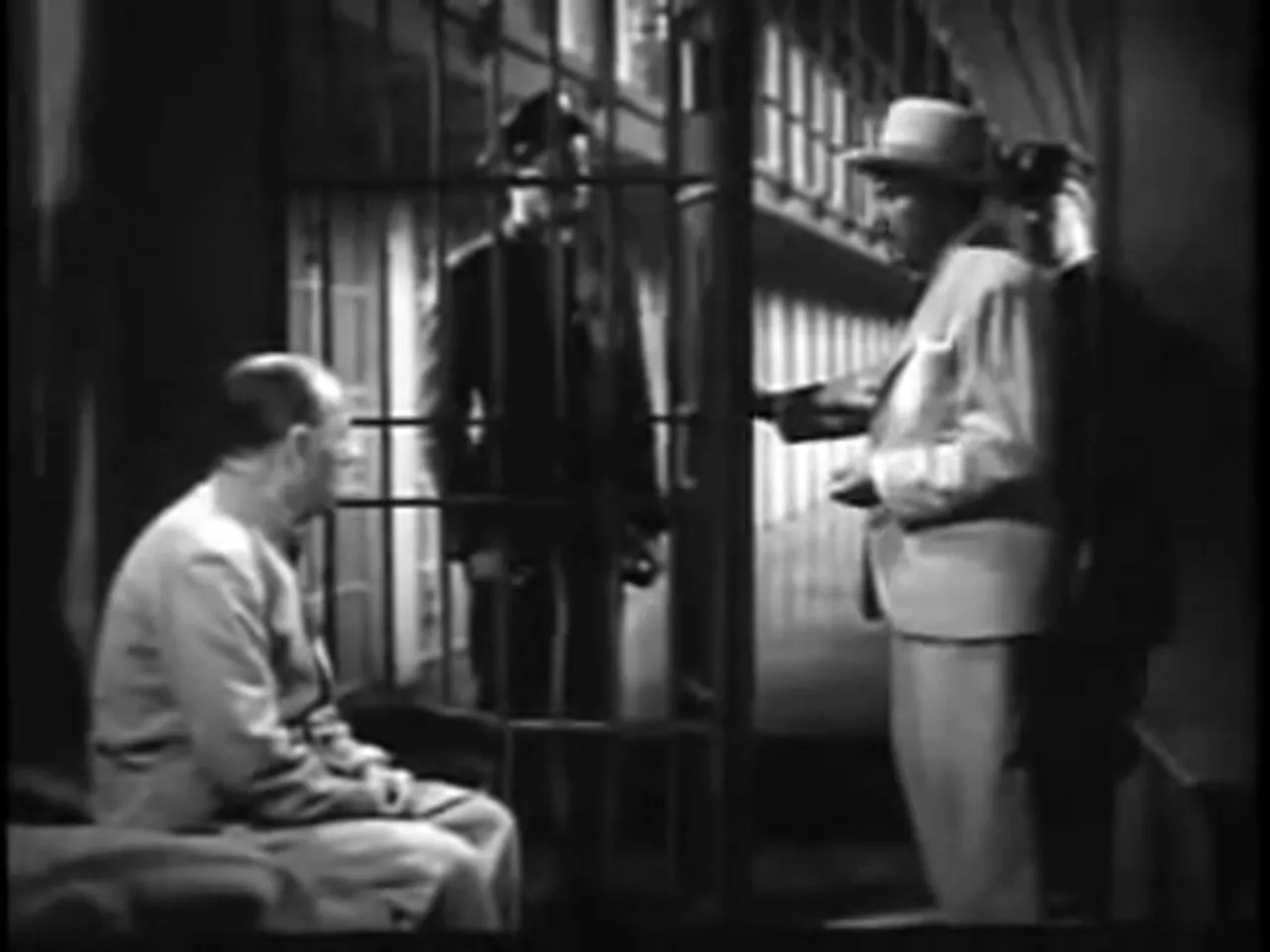
As suspects fall into place, so do betrayals. Convict Jimmy Slade steals fingerprint cards and helps move them through a chain that includes a corrupt intermediary who photographs and engraves the prints on rubber. A salesman named Danvers, who is often on the road and has suspicious patterns of visiting cities where robberies occurred, emerges as the dangerous operative. The film noir movie's final act reveals the missing mastermind: someone inside the prison apparatus who makes the system vulnerable to exploitation. The climax — a confrontation in the warehouse and the capture of the murderer — restores Harley's freedom, but the film noir movie leaves an uneasy aftertaste about how easily evidence can be faked.
Key Plot Beats
- Accusation in the hotel room; fingerprints at the vault incriminate Harley
- June Harley hires Charlie Chan; the typewritten note points to the Foss Hotel
- Investigation reveals the Carey Warehouse, a showgirl's costume, and Miss Petrie’s secret
- Miss Petrie is killed in a staged truck accident; a purse-button is left as a red herring
- Chan verifies that fingerprint cards have been tampered with; Jimmy Slade implicated
- Equipment for forging fingerprints discovered in a truck; Danvers is unmasked as the killer
- Harley’s release and the film noir movie’s moral coda
Characters and Performances: Casting the Machinery of Suspicion
The film noir movie thrives on sharp, economical casting, and Dark Alibi benefits from an ensemble that can balance comic relief, menace, and pathos. Sidney Toler embodies Charlie Chan with the calm authority that made the character familiar to audiences. His performance is cerebral rather than theatrical: Chan understands that the case hinges not on melodrama but on patient forensic attention. Toler's Chan reveals a signature mixture of geniality and relentless curiosity that aligns perfectly with the film noir movie's ethical center.
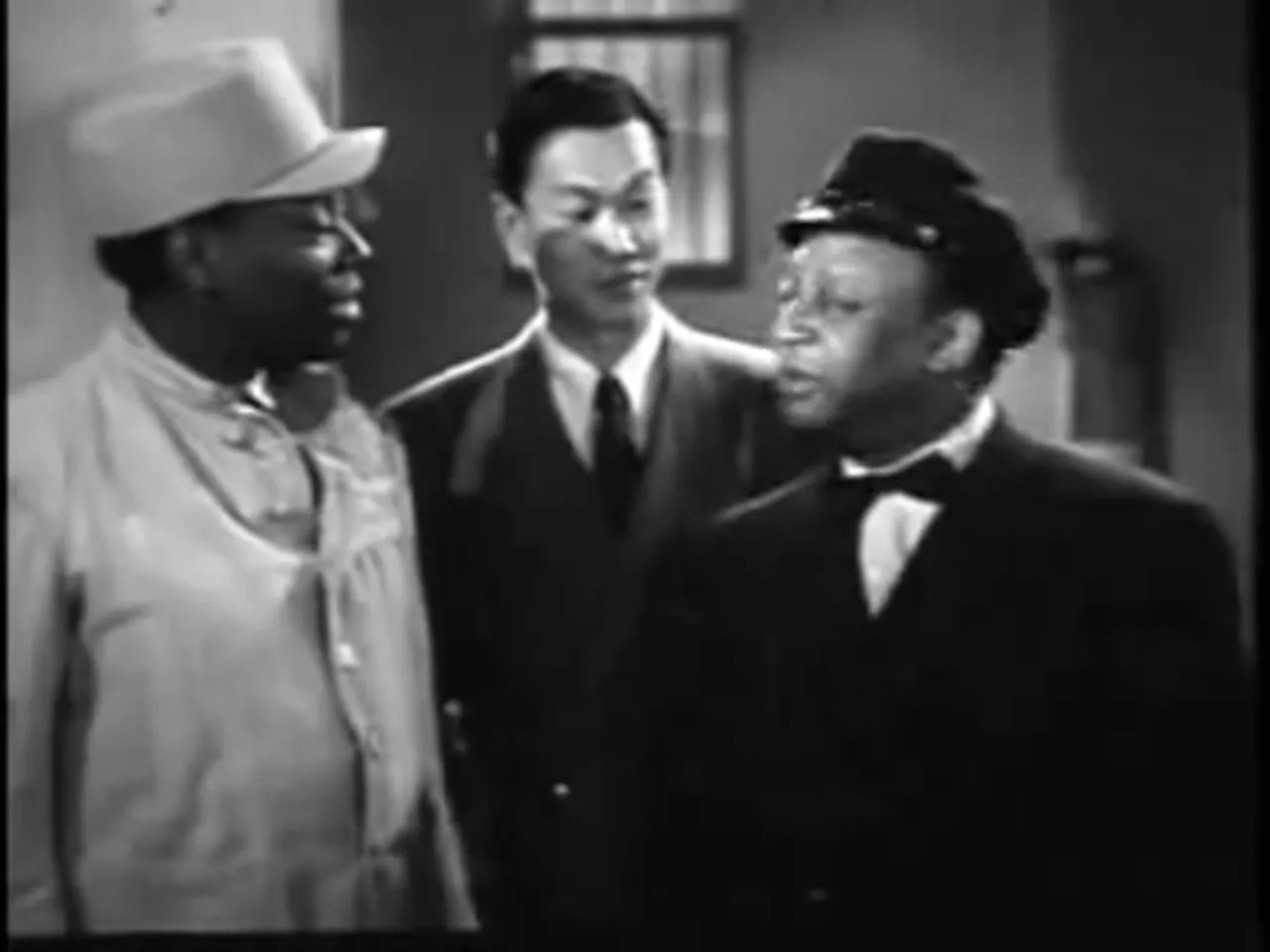
Benson Fong's Tommy Chan provides the youthful foil, and his interplay with Chan adds touches of domestic warmth to the film noir movie's otherwise stark field. Mantan Moreland's Birmingham Brown and Ben Carter’s Benjamin Brown inject comic relief in ways that were typical of the period; their contributions are lively, though modern readers will view them through the era's fraught racial dynamics. The chorus girl Emily Evans (Joyce Compton) and June Harley (Teala Loring) function as the film's emotional centers — one frivolous and exposed to suspicion, the other dignified and resolute.
Among the supporting cast, Anthony Warde as Jimmy Slade and Ray Walker as Danvers are crucial: Warde's Slade illustrates the coercive vulnerability of an inmate entangled with a corrupt scheme, while Walker's Danvers brings a vague charm that conceals chilling calculation. Milton Parsons as Johnson and Janet Shaw as Miss Petrie round out the ensemble, bringing credible texture to the apartment-house microcosm that the film noir movie uses as a crucible for crime and suspicion.
Performance Highlights
- Sidney Toler: steady, methodical, the voice of reason.
- Benson Fong: comic warmth, handles the film noir movie's lighter beats.
- Mantan Moreland and Ben Carter: energetic sidekicks that provide contrast.
- Anthony Warde: a hard edge that underlines the film noir movie’s danger.
- Janet Shaw: Miss Petrie’s shyness masks lethal consequences.
Thematic Threads: Justice, Identity, and the Forgery of Truth
Dark Alibi is thematically preoccupied with the vulnerability of institutions that rely on technical evidence. The fingerprint, a symbol of uniqueness and incontrovertible proof in the criminal-justice imagination, becomes the film noir movie’s central object of anxiety. By rendering prints as transferable, reproducible artifacts, the movie destabilizes the categorical certainty that fingerprints provide. This inversion — from proof to forgery — makes the film noir movie not just a whodunit but a meditation on how forms of identification can be subverted.
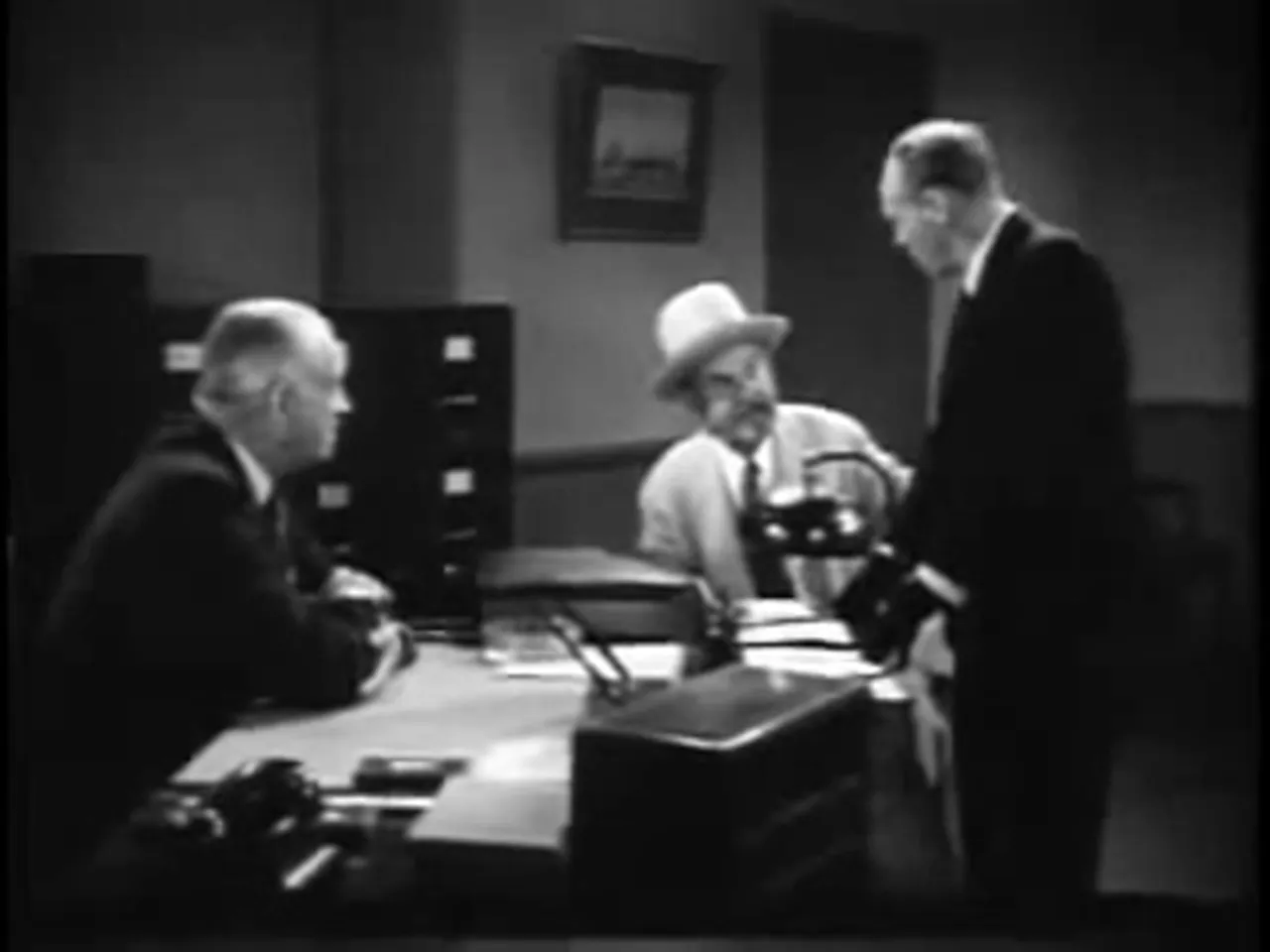
Dark Alibi explores guilt and innocence in a society eager to close cases. Thomas Harley's prior imprisonment stains his reputation and biases investigators; the court and press are poised to accept an easy narrative of recidivism. The film noir movie thus critiques a system where circumstantial readings and social prejudice override deeper inquiry. June Harley’s anxiety — nine days until execution — emphasizes a judicial timeline that is indifferent to nuance. The film noir movie, here, is a plea for due process performed with rigor.
Another prominent theme is identity performed through objects: a typewriter, a costume, a purse-button, a stock of rubber plates. These are the tokens through which characters are seen and misseen. Miss Petrie’s retained secrets, the Foss Hotel’s shaky social mission to rehabilitate ex-convicts, and the prison’s everyday mechanics provide a network of small spaces where reputations are made and undone. Dark Alibi shows how an apparently private domestic world can be instrumentalized into a public frame-up, a theme resonant in other film noir movies that link the intimate and the institutional.
Technical Craft: Direction, Cinematography, Editing, and Music
Phil Karlson directs Dark Alibi with an economy that suits its brief runtime. Karlson calibrates scenes for functional clarity and suspense; there is no wasted dialogue or protracted set pieces. Rather, the direction emphasizes the choreography of evidence-gathering — an aesthetic decision that converts the film noir movie into a study of labor and expertise. Karlson's touch situates the film as a procedural drama with noir undertones: shadowed corners, sudden violence, and a persistent sense of paranoia about documentary truth.
William A. Sickner’s cinematography uses tight framing and practical lighting to underline moments of discovery. The shots in the warehouse and the prison adopt a verticality that emphasizes containment — characters boxed in by institutional architectures that both protect and betray. Ace Herman’s editing maintains brisk momentum; cuts are functional, keeping the plot wheels turning while legitimizing the small experiments Chan performs. Edward J. Kay’s music supports the film noir movie’s moods without overwhelming them, punctuating tension or melancholy where the script calls for it.
Technically, Dark Alibi presents one of the more methodical cinematic treatments of forensic fakery in its era. The sequence where the forging process is replicated — photography, engraving, oil mixtures to emulate skin oils — becomes an almost tutorial moment. In terms of a film noir movie, those scenes dramatize the modern anxieties of technological substitution: if the trace can be manufactured, what then is evidence? The camera treats those machines with the same attention it would give a weapon, recognizing a tool’s ethical ambiguity.
Charlie Chan’s Methodology: Deduction, Experiment, and Ethical Pressure
What distinguishes Dark Alibi, as a film noir movie, is Charlie Chan’s blend of old-fashioned detective reasoning and modern, experimental verification. Chan is neither a pure empiricist nor a mere guesser; his method is hybrid. He questions social contexts — tenants’ histories, typewriter ownership, travel records — while also testing physical hypotheses. He instructs experiments to reproduce the forged prints using engraved rubber pads and carefully calibrated oil mixtures. This insistence on reproducing the crime’s technical novelty makes the film noir movie less reliant on sensational revelation and more on demonstrable proof.
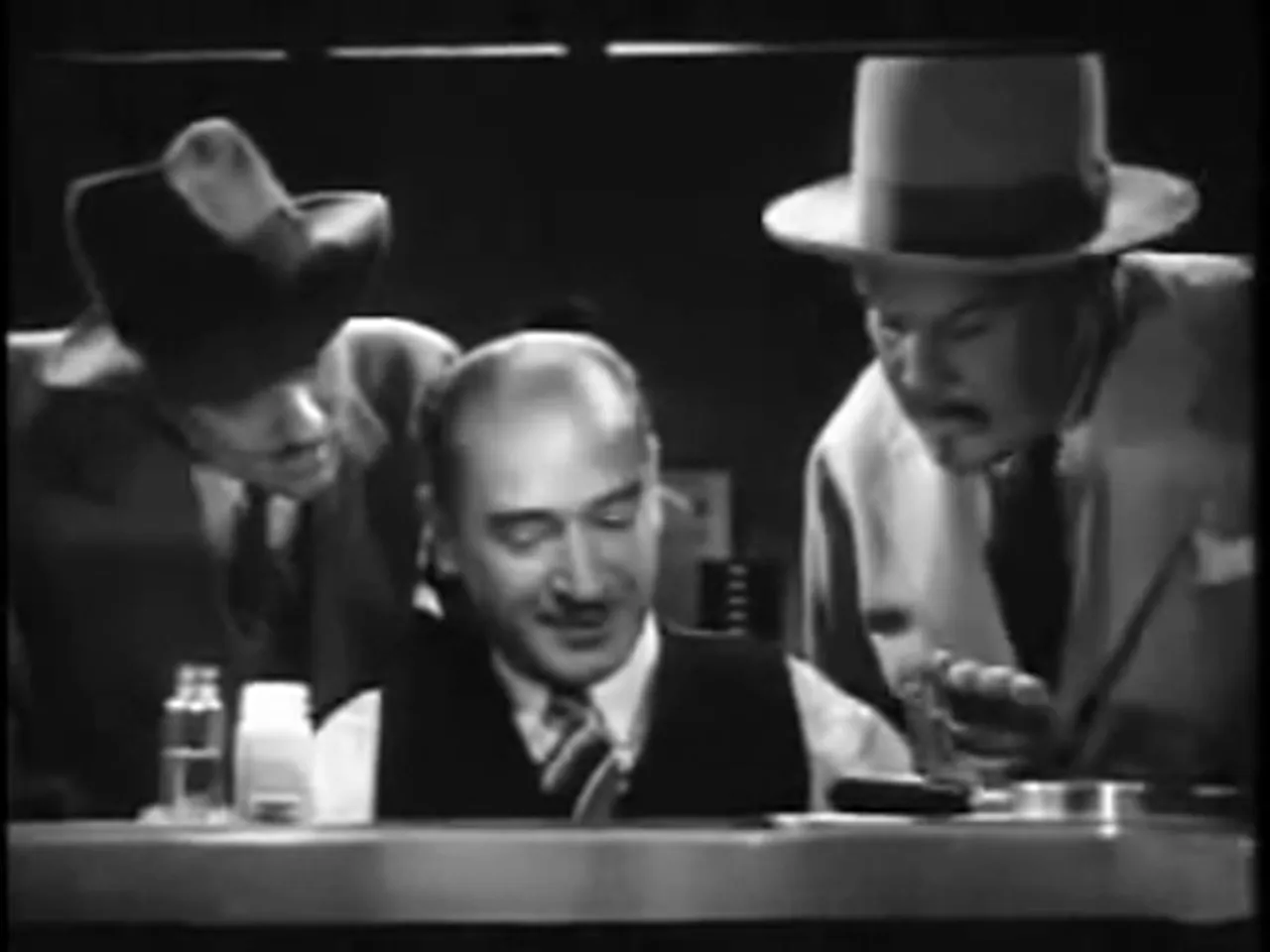
Chan’s strategy matters in the film noir movie because it restores the primacy of reason against institutional shortcuts. He leverages personnel — the warden, the prison guards, the forensic technician — to reveal how the chain of custody was breached. Chan’s unglamorous, methodical work is an ethical model: it insists that overturning a death sentence requires not rhetorical flourish but forensic patience. That message is a film noir movie's counterpoint to generous fatalism; rather than resigning to systemized error, the narrative insists on remediation through careful labor.
Genre Placement: Is Dark Alibi Truly a Film Noir Movie?
Labeling Dark Alibi exclusively as a film noir movie is reductive. The film is, by lineage and tone, a Charlie Chan mystery: a detective piece emphasizing rational deduction. However, the film noir movie designation is justified in several respects. First, its themes — institutional failure, moral ambiguity, and the manipulation of evidence — align with noir's preoccupations. Second, the film’s visual and narrative palette — shadows, nighttime danger, staging that makes accidents into deliberate acts — resonates with noir aesthetics. Finally, its cynicism about the dependability of supposed technical certainties derives from noir's broader anxieties about modernity.
That said, Dark Alibi does not fully mobilize noir’s existential despair or stylistic maximalism. It remains fundamentally centered on resolution and the restoration of legal innocence. Where darker film noir movies leave characters broken or adjudications unresolved, Dark Alibi concludes with a procedural correction: those responsible are exposed, and Thomas Harley is freed. The film noir movie label is therefore appropriate in a qualified sense: Dark Alibi is a film noir movie that leans toward moral recuperation rather than nihilistic collapse.
Noir Elements Present
- Focus on crime’s procedural and institutional dimensions
- Use of physical artifacts (prints, typewriter, costumes) as symbolic markers
- Atmosphere of danger and staged violence (truck accident; shootings)
- Cynicism toward official narrative and the fallibility of evidence
Noir Elements Absent or Mitigated
- Less existential despair; the ending restores order.
- Minimal femme fatale archetype; female characters are either victims or moral anchors rather than agents of entrapment.
- Stylistically restrained compared to more expressionistic film noir movies.
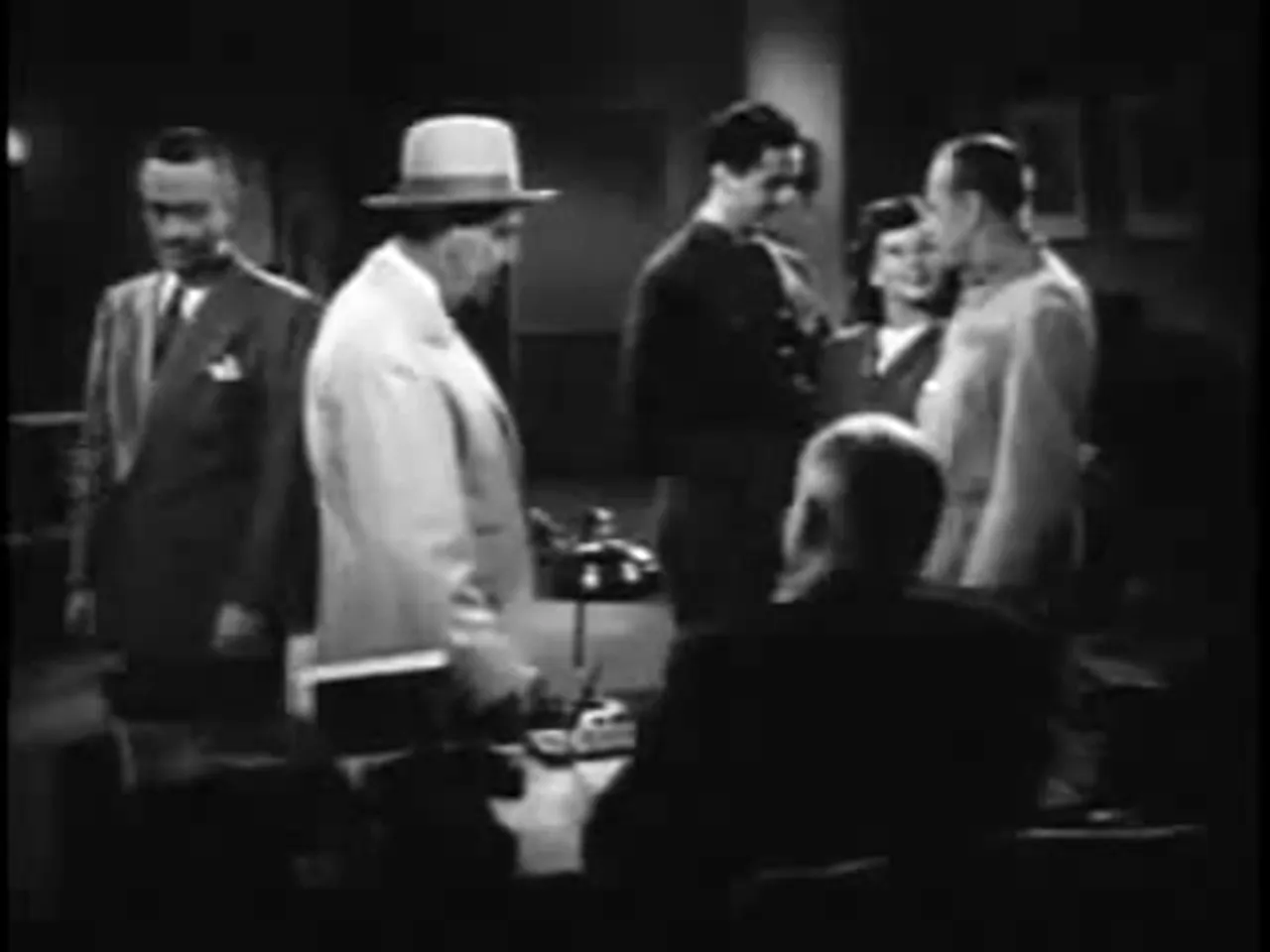
Context, Reception, and Legacy
Released in 1946 by Monogram Pictures, Dark Alibi arrived at a time when film studios were exploring darker urban crime stories and audiences were receptive to narratives that probed the limits of law and evidence. As a compact film noir movie, Dark Alibi demonstrates how Poverty Row studios could craft compelling, thought-provoking mysteries without lavish budgets. Phil Karlson’s direction, along with William A. Sickner’s cinematography, accomplishes a lot within constrained means.
The film’s significance lies in its attention to procedural detail and the ethical stakes attached to forensic evidence. For modern viewers and scholars of classic cinema, Dark Alibi offers a template for how genre cinema can ask serious questions about the reliability of scientific proof. It anticipates subsequent legal dramas and crime films that focus on chain-of-custody vulnerabilities and forensic exploitation. As a film noir movie, it exemplifies the genre’s capacity to interrogate modern institutions rather than merely to aestheticize doom.
Contributions to the Charlie Chan Canon
Within the Charlie Chan film series, Dark Alibi stands out for its concentrated plot and its interest in procedural forgery. Rather than relying on exotic locales or elaborate set pieces, the film negotiates a taut narrative that places Chan in a modern contested terrain: the prison system and the bureaucratic artifacts of criminal evidence. This focus gives the entry a specific gravitas in the series and makes it one of the more plausible, methodical entries from a detective’s perspective.
Close Read: Scenes that Define the Film Noir Movie’s Argument
Several scenes crystallize Dark Alibi's argument about the fragility of proof and the human consequences of manufactured evidence. Close reading these moments reveals the film noir movie’s strategy of incremental revelation.
1. The Accusation Scene (Dining Room)
From the transcript: "Robbing the Citizens State Bank and murdering a guard less than an hour ago." The initial accusation is not just an inciting incident; it establishes the film noir movie’s central conflict — the collision between visible evidence and plausible alibi. Harley’s claim of being locked in the Cary Theatrical Warehouse produces an evidentiary paradox that the narrative must resolve.
2. The Typewriter Clue (Foss Hotel)
The small domestic object — a landlady’s typewriter — becomes decisive. It demonstrates how mundane tools can be repurposed into devices of deception. The typewriter’s presence at the center of the conspiracy reveals the film noir movie’s fascination with the banality of betrayal and the way ordinary domesticity can mask criminal design.
3. The Forgery Experiment (Laboratory Sequence)
Perhaps the film noir movie’s most original sequence: Chan’s collaboration with a laboratory technician to reproduce forged fingerprints. The scene is forensic cinema in miniature — photography, engraving, mixtures of oil — and it dramatizes the film’s core thesis: that modern crimes can be institutionalized through technological mimicry. The success of the experiment turns evidence into a demonstrable artifact of fraud.
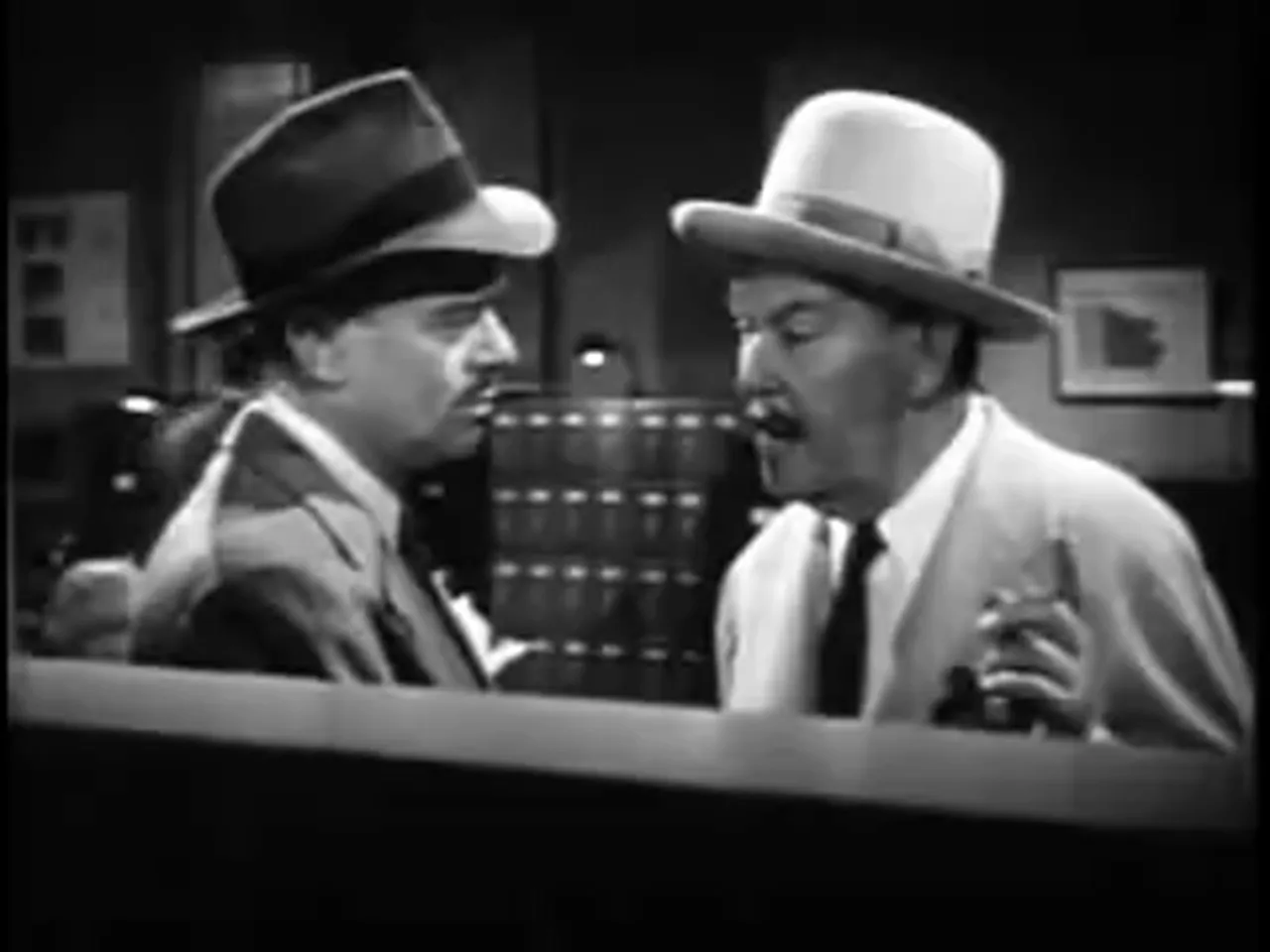
4. The Truck and the Camera Rig
The truck that kills Miss Petrie and the discovery within it of camera and engraving apparatus is the film noir movie’s nexus of action. Vehicles in noir often symbolize escape or menace; here, the truck is a mobile workshop for falsification. The reveal makes the conspiracy tangible — literally housed in metal and glass — and produces the film’s climactic arrest sequence.
Ethical Resonances: The Film Noir Movie as a Cautionary Tale
Dark Alibi’s ethical intervention is clear: the criminal-justice system’s reliance on technical evidence without rigorous verification can result in irreversible harm. The nine-day countdown to execution creates an urgency that is cinematic and moral. The film noir movie does not merely dramatize the possibility of error; it demonstrates how easily technical signs can be constructed and misattributed. In a modern reading, that message anticipates concerns about forensic misconduct, misapplied science, and the social biases that make certain suspects more vulnerable.
Through Charlie Chan’s insistence on experiment and chain-of-custody scrutiny, the film noir movie advances an ethic of skepticism toward received proofs — an ethic still valuable in contemporary debates about forensic reliability. It is a film that teaches the viewer to see the instruments of proof as objects that can be misused and to recognize the labor required to test them.
Style, Tone, and the Charms of an Old-Time Film Noir Movie
Dark Alibi balances a reserved seriousness with populist charm. The script allows for light touches — comic relief from side characters, gentle banter between Chan and his son — that humanize the procedural spine. Those tonal shifts serve the film noir movie by tempering the stakes with human warmth; the film remains invested in saving an innocent man rather than luxuriating in moral ambiguity. The result is accessible noir: less bitter than some entries in the genre, but still committed to exposing institutional corrosion.
Stylistically, the film noir movie’s restraint is one of its strengths. Monogram's budget constraints require economical choices, and those choices emphasize storytelling efficiency over stylistic excess. The result is a film that feels purposeful: every scene serves the case, every prop matters, and the editing keeps the audience in step with Chan’s reasoning.
Who Should Watch This Film Noir Movie — And Why It Still Matters
Dark Alibi will reward viewers who appreciate detective stories grounded in technique and civic consequence. Fans of classic cinema will find Sidney Toler’s Charlie Chan an exemplar of mid-century investigative poise. Students of crime cinema and film noir movie aficionados will recognize this entry as a study in how genre films can interrogate evidence and accountability. And for contemporary audiences interested in legal ethics and forensic history, Dark Alibi functions as an instructive case study about how evidence may be engineered.
Because it is compact, the film noir movie can be appreciated in a single sitting — a concentrated lesson in mystery construction executed with clarity. It is not the blackest noir, nor the most baroque detective film; instead, it is a well-made specimen of how a genre can be both entertaining and urgently moral.
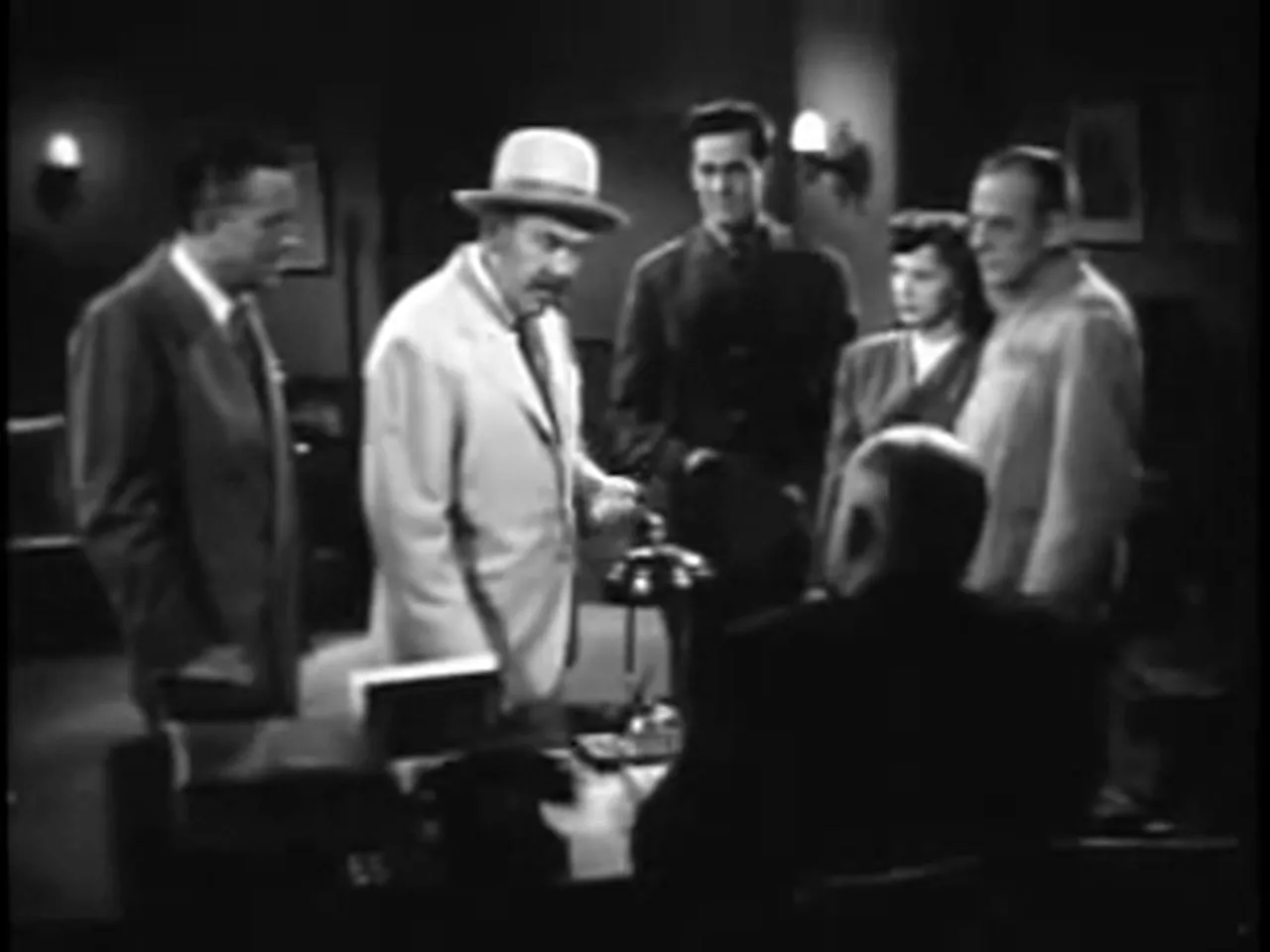
Conclusion: Dark Alibi’s Quiet Power as a Film Noir Movie
Dark Alibi stands as an exemplar of craft-minded mystery cinema. As a film noir movie, it interrogates how evidence can be manufactured, how institutional biases compound injustice, and how methodical labor can restore truth. The film’s strength lies in its focus: it does not meander into exoticism or sensationalism but remains devoted to the process by which a detective unspools a forgery scheme and exposes its human architects.
For viewers exploring the intersections of classic detective storytelling and film noir movie themes, Dark Alibi offers a compact, instructive, and morally earnest experience. It is a film that respects the audience’s intelligence, privileges patient proof over melodramatic confessions, and ultimately insists that justice demands both technical scruples and human courage.
Final Recommendation
Dark Alibi is recommended for classic film enthusiasts, students of crime cinema, and anyone curious about the forensic anxieties at the heart of the film noir movie tradition. Watch with an eye toward the small objects — typewriters, fingerprint cards, engraving tools — and the bureaucratic chains that connect them; the film’s moral weight lies precisely in how such artifacts can make or break a life.
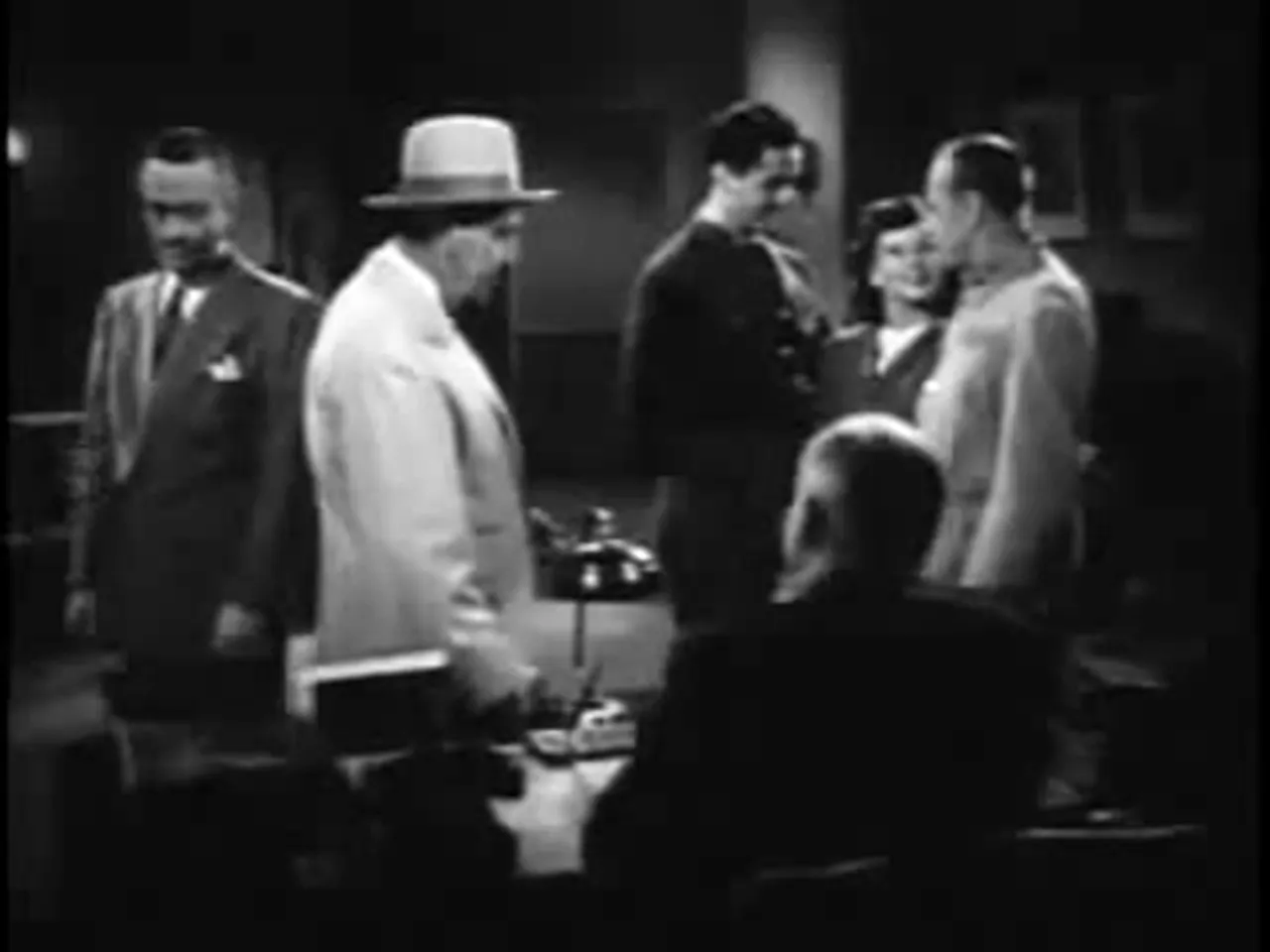
Selected Cast and Crew (for the Record)
- Directed by: Phil Karlson
- Written by: George Callahan (screenplay); characters by Earl Derr Biggers
- Produced by: James S. Burkett
- Starring: Sidney Toler (Charlie Chan), Benson Fong (Tommy Chan), Mantan Moreland (Birmingham Brown)
- Cinematography: William A. Sickner
- Edited by: Ace Herman
- Music by: Edward J. Kay
- Production company: Monogram Pictures
- Release date: May 25, 1946
- Running time: 61 minutes
Invitation from the Critic
The classic cinema critic encourages readers to consider Dark Alibi as both a product of its moment and an enduring exploration of how systems of proof can be politicized, inverted, and weaponized. For those who enjoy film noir movie discussions that combine formal analysis with ethical inquiry, Dark Alibi offers rich material: a short, intense case study about the fragility of justice and the work required to recover it.
Readers are invited to revisit the film as an artifact of mid-20th-century genre filmmaking — a film noir movie that asks us to watch how seemingly technical details can determine human fate. The critic hopes that this close reading prompts renewed appreciation for the film and for the broader conversations it instigates about evidence, error, and the detective’s role as both scientist and moral witness.
